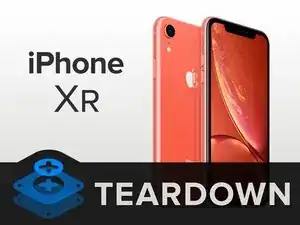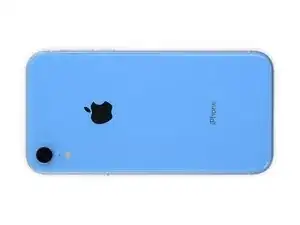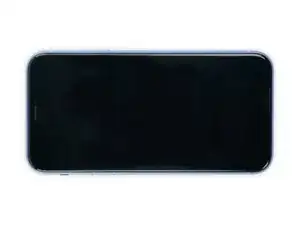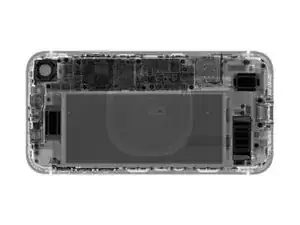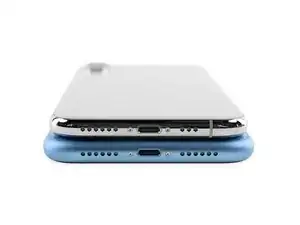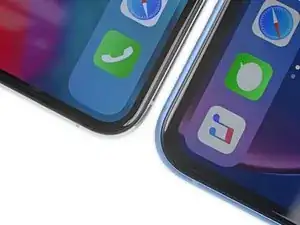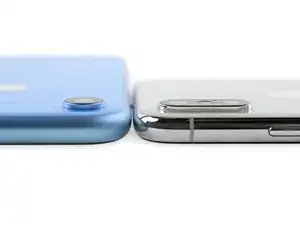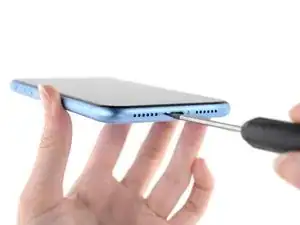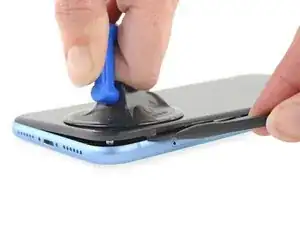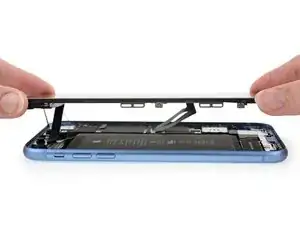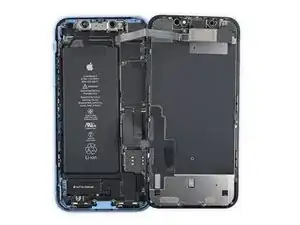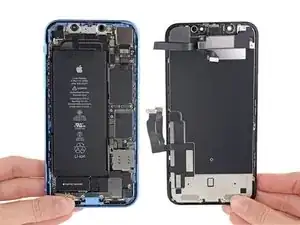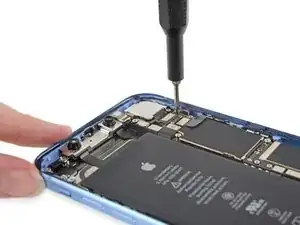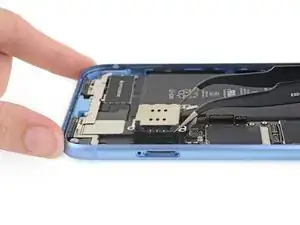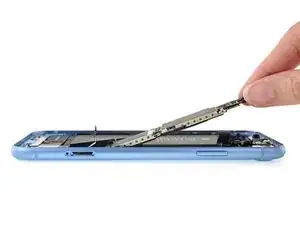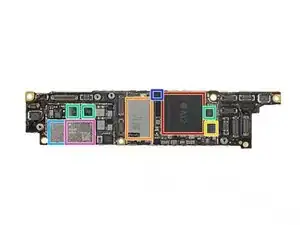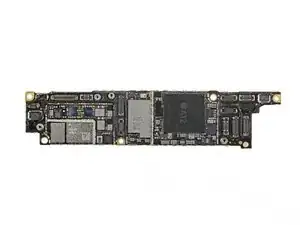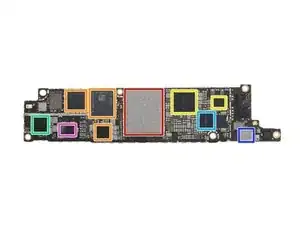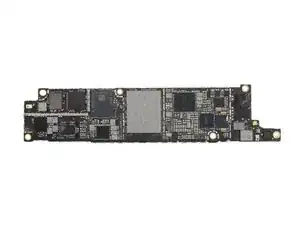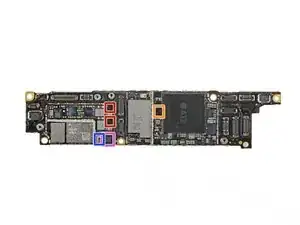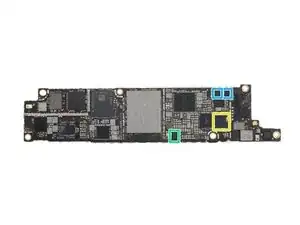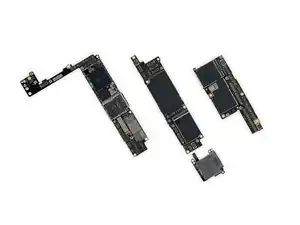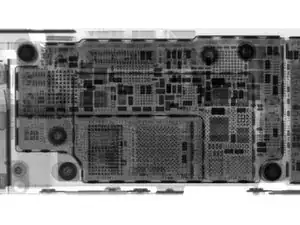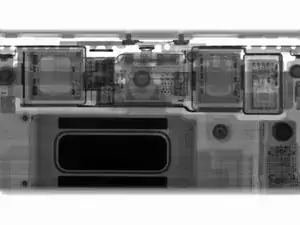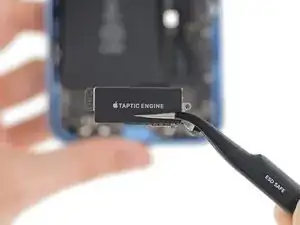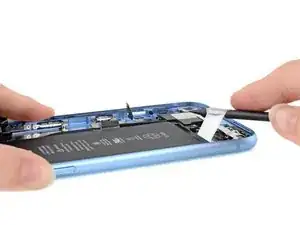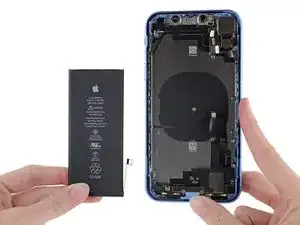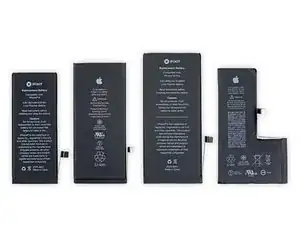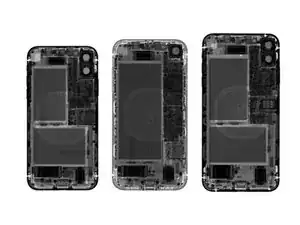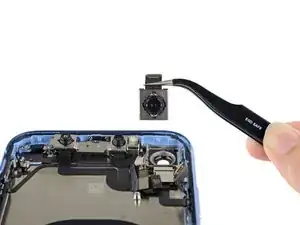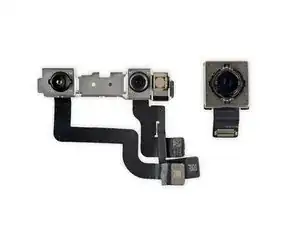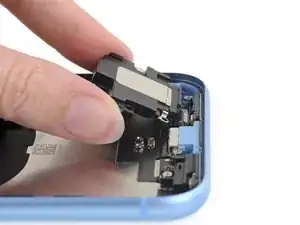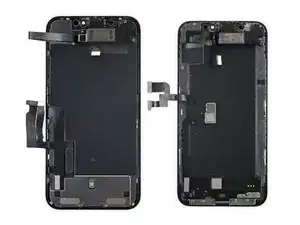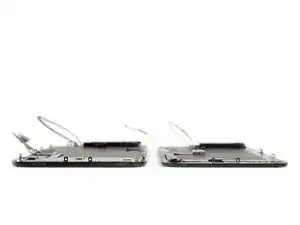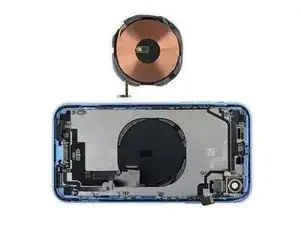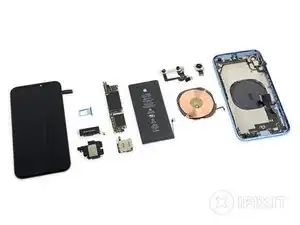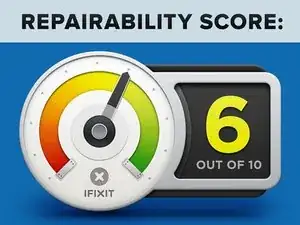Introduction
Don’t want to spend $1,000 on a smartphone? This year Apple brings top-tier specs to the iPhone XR so you can get all the fancy features you want for less. Did they compromise too much? Not enough? Since when is $750 cheap? There’s only one way to find out—let’s tear it down!
Follow us on Facebook, Instagram, or Twitter to keep up with all the latest teardowns. Subscribe to our newsletter to have your teardowns delivered.
Tools
-
-
The iPhone XR may look a little different on the outside, but the specs look pretty familiar:
-
Hexa-core A12 Bionic SoC with a "next-generation" Neural Engine
-
6.1" Liquid Retina LCD display with 1792 x 828 resolution at 326 ppi, True Tone, and wide color (P3) gamut support
-
12 MP rear camera at ƒ/1.8 aperture with OIS, and 7 MP selfie cam paired with TrueDepth FaceID hardware
-
64 GB of onboard storage (128 GB and 256 GB optional configs)
-
Broad cellular band support with eSIM capability and 802.11a/b/g/n/ac Wi‑Fi w/MIMO + Bluetooth 5.0 + NFC
-
IP67 dust/water ingress rating
-
-
-
There were a lot of colors to choose from, but we have an affinity for blue and black.
-
Colors don't matter much when you can see through anything though! Our friends from Creative Electron gave us a sneak peek at the inside of this new iPhone with some XR-ays.
-
-
-
Trying to stir up a bit of sibling rivalry, we stack the XR against the XS and see what differences we can spot.
-
We start our search at the bottom edge, where the XR's missing antenna band and nice symmetrical grilles remind us more of last year's X.
-
Switching on the displays, it's easy to see that the XR's bezels are a bit bigger—and if you get really close, the curves start to get a little rough around the edges.
-
The XR inherited a lot of features from the XS, but only got one camera—the wide-angle, while the telephoto stays with the XS.
-
-
-
Similarities to the XS continue with the opening procedure: pentalobe screws surround the not-quite-centered-anymore charging port, and opening takes just a little help from an iOpener.
-
Differences include: surprisingly non-color-matched pentalobe screws, and a SIM slot that slid down toward the bottom of the phone.
-
-
-
The thoughtful, display-first opening procedure is over with just like that—about as painless as it gets on a water-resistant smartphone.
-
Inside, the XR starts to look more like a fun hybrid between the 8 and the X. We're back to a rectangular battery, but there's also a rectangular logic board.
-
The question is: How many layers does that logic board have?
-
-
-
On the way to freeing up the logic board, we're encountering a veritable plethora of standoff screws. We're used to one or two per iPhone, not
Xten. -
Luckily, we're armed and ready.
-
What's this? A modular SIM card reader! That's an iPhone first.
-
This is likely a concession to the Chinese market, where eSIM is not supported—so in order to enable dual-sim functionality on Chinese models, Apple installs a dual Nano-SIM reader. The modular approach makes this much easier than it would be if the reader were soldered to the main board, as in past models.
-
The svelt, non-elbowed, single-decker logic board is now free to escape!
-
-
-
With the logic board out, we get our first look at the onboard silicon:
-
Apple APL1W81 A12 Bionic SoC, layered over Micron MT53D384M64D4SB-046 XT:E 3 GB LPDDR4x SDRAM
-
Apple/USI 339S00580 (likely a WiFi/Bluetooth module, similar to what's found in the XS)
-
NXP Semiconductor SN100V NFC controller
-
3x Apple/Cirrus Logic 338S00411 audio amplifiers
-
Skyworks 203-15 G67407 1838 (likely a power amplification module)
-
Infineon (formerly Cypress Semiconductor) CYPD2104 USB type-C port controller
-
Qorvo QM76018 RF Front End Module
-
-
-
More chips on the back side of the logic board. Show us your identification, please...
-
Toshiba TSB3243VC0428CHNA1 64 GB flash storage
-
Intel PMB9955 (likely the XMM7560 LTE Advanced Pro 4G LTE baseband processor), PMB5762 RF transceiver, and PMB5829
-
Apple 338S00383-A0, 338S00375-A1 power management IC's (possibly from Dialog Systems)
-
Texas Instruments SN2600B1 battery charging IC
-
Apple/Cirrus Logic 338S00248 audio codec
-
Skyworks SKY13768 front end module
-
Broadcom BCM59355A2IUB4G (likely a variation of the BCM59350 wireless power receiver chip)
-
-
-
IC Identification, pt 2.
-
Texas Instruments LM3539 backlight driver
-
NXP Semiconductor CBTL161x display port multiplexer (likely)
-
STMicroelectronics STB601A0 power management
-
Texas Instruments TPS65730 display power management
-
Texas Instruments LED driver (likely)
-
Bosch Sensortec BMP282 pressure sensor
-
Bosch Sensortec accelerometer
-
-
-
Moving on from the logic board, here are two more logic boards.
-
The new XR board + SIM reader (center) looks a bit like an unfolded iPhone X board (right). The sprawling iPhone 8 Plus board is shown at left for comparison.
-
This new form factor pretty much perfectly fills the gap in the evolution of iPhone logic boards.
-
A closeup via X-rays reminds us that this "simplified" iPhone logic board is still enormously complex.
-
Even more silicon hides beneath other components, like the TrueDepth camera system.
-
-
-
With the logic board out of the way, we fish out the famous Taptic Engine!
-
Next out is that rectangle battery! We're more than happy to encounter four whole adhesive pull tabs that make removal quite breezy.
-
-
-
All four tabs perform admirably, and the 11.16 Wh battery is removed goo-free!
-
We've already heard that the XR has the best iPhone battery life yet, but just how does it stack up? Time for a battery parade!
-
Left to right, we have: iPhone 8 (6.96 Wh), iPhone XR (who is #winning), iPhone 8 Plus (10.28 Wh), and iPhone XS (10.13 Wh).
-
If you're looking for an Apples-to-oranges comparison, Android is still winning the pure capacity game. The Galaxy S9+ remains champion at 13.48 Wh, and the Pixel 3 XL follows closely at 13.2 Wh.
-
While we're stacking, let's take the opportunity to X-amine some X-series X-rays. Left to right, we have the iPhone X, the XR (with its less-dense aluminum frame), and the XS Max!
-
-
-
Here’s the single rear camera—the same newly-updated wide-angle module from the XS and XS Max.
-
We line the camera up alongside the TrueDepth system powering FaceID—which, as far as we can tell, looks pretty much unchanged from when we first saw it in the iPhone X.
-
Not to be left behind, the lower speaker is next—it's still pretty easy to remove, which is good, because you’ll probably want it out of the way for a battery replacement.
-
-
-
Next we turn our attention to Apple’s much-discussed Liquid Retina display.
-
The XR’s LCD is 0.3” larger across than the XS’s AMOLED, but it’s also thicker and heavier—as is expected from an LCD.
-
As far as we can tell, this thicker display assembly is what has pushed the Lightning connector off-axis.
-
Getting back into the case, we dig out the wireless charging coil for a closer look.
-
We’ve struck copper! Copper’s lower resistance (compared to FPC in the X) should mean faster charging with less heat.
-
-
-
With the XR fully excavated, we display the tidbits from our dig:
-
Thanks again to our good friends at Creative Electron. Now we'll leave you with a really good joke:
-
What's a pirate's favorite iPhone?
-
The X-ARRRrrrrr
-
-
-
The iPhone XR earns a 6 out of 10 on our repairability scale (10 is the easiest to repair):
-
The display-first opening procedure and easy access to the battery remain design priorities.
-
A broken display can be replaced with minimal hardware removal, and with a little care you can preserve Face ID.
-
Apple again uses tiny uncommon Pentalobe and tri-point screws to stymie repair, but these fasteners are preferred over tough glue.
-
Waterproofing measures complicate some repairs, but make difficult water damage repairs less likely.
-
Glass on front and back doubles the crackability—and broken back glass requires an entire chassis replacement.
-
